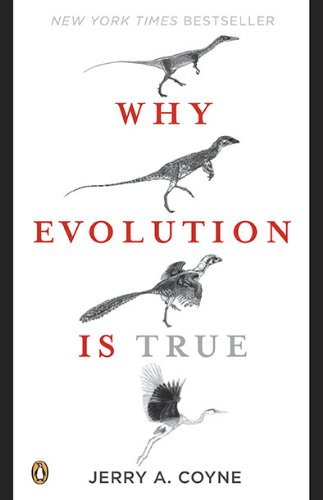Evolution of the Whale
Indohyus was not the ancestor of whales, but was almost certainly its cousin. But if we go back four million more years, to fifty-two million years ago, we see what might well be that ancestor. It is a fossil skull from a wolf-sized creature called Pakicetus, which is a bit more whale-like than Indohyus, having simpler teeth and more whale-like ears. Pakicetus still looked nothing like a modern whale, so if you had been around to see it, you wouldn’t have guessed that it or its close relatives would give rise to a dramatic evolutionary radiation. Then follows, in rapid order, a series of fossils that become more and more aquatic with time. At fifty million years ago there is the remarkable Ambulocetus (literally, “walking whale”), with an elongated skull and reduced but still robust limbs, limbs that still ended in hooves that reveal its ancestry. It probably spent most of its time in shallow water, and would have waddled awkwardly on land, much like a seal. Rodhocetus (forty-seven million years ago) is even more aquatic. Its nostrils have moved somewhat backward, and it has a more elongated skull. With stout extensions on the backbone to anchor its tail muscles, Rodhocetus must have been a good swimmer, but was handicapped on land by its small pelvis and hindlimbs. The creature certainly spent most if not all of its time at sea. Finally, at forty million years ago, we find the fossils Basilosaurus and Dorudon—clearly fully aquatic mammals, with short necks and blowholes atop the skull. They could not have spent any time on land, for their pelvis and hindlimbs were reduced (the 50-foot Dorudon had legs only 2 feet long) and were unconnected to the rest of the skeleton.
Notes:
Species by species list of the links from ancient land mammals to the whale.
Folksonomies: evolution transition whale missing link
Taxonomies:
/pets/large animals (0.580856)
/pets/reptiles (0.449484)
/science/social science/history/genealogy (0.421573)
Keywords:
ancient land mammals (0.969273 (neutral:0.000000)), dramatic evolutionary radiation (0.903036 (positive:0.372520)), fossil skull (0.767520 (negative:-0.565880)), whale-like ears (0.745117 (positive:0.446624)), Whale Species (0.732646 (neutral:0.000000)), modern whale (0.724769 (neutral:0.000000)), robust limbs (0.674189 (positive:0.263988)), wolf-sized creature (0.670110 (negative:-0.352731)), small pelvis (0.663054 (negative:-0.716255)), simpler teeth (0.661696 (positive:0.446624)), species list (0.655161 (neutral:0.000000)), close relatives (0.652098 (neutral:0.000000)), 50-foot Dorudon (0.643504 (negative:-0.288216)), Ambulocetus (literally, ``walking (0.641648 (neutral:0.000000)), rapid order (0.639818 (neutral:0.000000)), fossils Basilosaurus (0.638599 (neutral:0.000000)), shallow water (0.635459 (negative:-0.711954)), aquatic mammals (0.623206 (neutral:0.000000)), tail muscles (0.622611 (neutral:0.000000)), good swimmer (0.616396 (neutral:0.000000)), short necks (0.612218 (negative:-0.460901)), stout extensions (0.609445 (positive:0.480249)), Indohyus (0.545355 (neutral:0.000000)), time (0.531388 (negative:-0.419330)), hindlimbs (0.518236 (negative:-0.556495)), ancestor (0.493207 (positive:0.431866)), Pakicetus (0.427314 (negative:-0.310065)), Rodhocetus (0.415128 (neutral:0.000000)), nostrils (0.401956 (negative:-0.563010)), hooves (0.384708 (neutral:0.000000))
Entities:
Indohyus:Person (0.798292 (neutral:0.000000)), Rodhocetus:Person (0.508185 (neutral:0.000000)), forty-seven million years:Quantity (0.508185 (neutral:0.000000)), fifty-two million
years:Quantity (0.508185 (neutral:0.000000)), fifty
million years:Quantity (0.508185 (neutral:0.000000)), forty million
years:Quantity (0.508185 (neutral:0.000000)), 50-foot:Quantity (0.508185 (neutral:0.000000)), 2 feet:Quantity (0.508185 (neutral:0.000000))
Concepts:
Evolution of cetaceans (0.954789): dbpedia | freebase | yago
Archaeoceti (0.673318): dbpedia | freebase | yago
Evolution (0.536434): dbpedia | freebase | opencyc
Transitional fossil (0.530616): dbpedia | freebase
Dinosaur (0.512962): dbpedia | freebase | opencyc
Eocene mammals (0.510498): dbpedia
Walking with Beasts (0.484439): website | dbpedia | freebase | yago
Mammal (0.443479): dbpedia | freebase | opencyc





